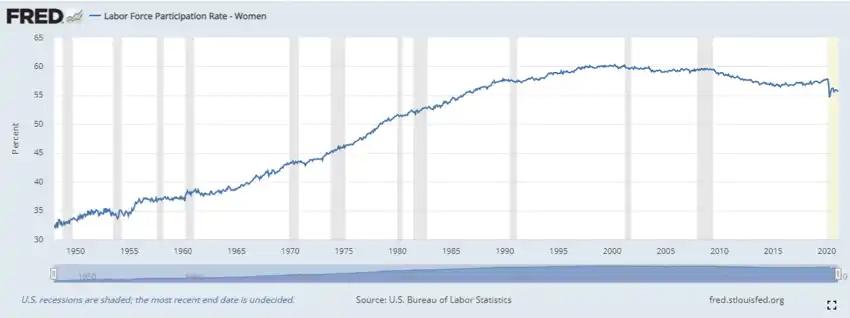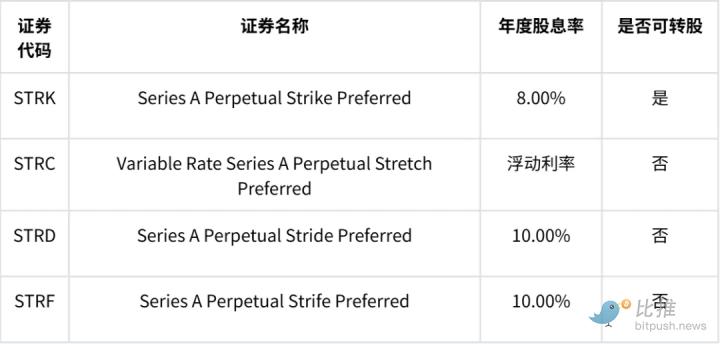Author: mikeykremer, Messari Researcher
Compiled by: ChatGPT
A glimpse of the future:
- Globalization has ended, and your financial assets have been liquidated.
- Non-traditional assets are your salvation.
- Bitcoin may reach $1 million.
From the outbreak of World War II (1939) to Trump's second election victory (2024), we have experienced an unprecedented super bull market. This sustained uptrend has shaped generation after generation of passive investors who habitually believe that "the market will never go wrong" and "the market will only go up." However, I believe this feast is over, and many are about to face liquidation.
How did we get here?
The super bull market from 1939 to 2024 was not accidental, but rather the result of a series of structural changes that fundamentally reshaped the global economy, with the US always at the center.
Emergence as a global superpower after WWII
WWII propelled the US from a middle power to the undisputed leader of the "free world." By 1945, the US produced more than half of the world's industrial products, controlled a third of global exports, and held about two-thirds of the world's gold reserves. This economic hegemony laid the foundation for the growth of the following decades.
Unlike the isolationism after WWI, post-WWII America actively embraced the role of global leader, driving the establishment of the United Nations and implementing the "Marshall Plan," injecting over $13 billion into the reconstruction of Western Europe. This was not just simple aid - by investing in the reconstruction of post-war nations, the US created new markets for its own products, while also establishing its dominant position in culture and economics.
Labor force expansion: women and minorities
During WWII, about 6.7 million women entered the labor force, causing the female labor participation rate to grow by nearly 50% in just a few years. Although many women left their jobs after the war, this massive mobilization permanently changed societal views on women's employment.

By 1950, the trend of large-scale employment of married women became increasingly evident, with female labor participation rates growing by an unprecedented 10 percentage points across most age groups. This was not just a wartime exception, but the starting point of a fundamental transformation of the American economic model. The "marriage ban" (policies prohibiting married women from working) was abolished, part-time work increased, domestic labor technologies were revolutionized, and higher education levels all contributed to the transition of women from temporary to long-term participants in the economic system.
Similar trends also occurred in minority groups, who gradually gained more economic opportunities. These labor force expansions effectively boosted the US's productive capacity and supported decades of economic growth.
Victory in the Cold War and the wave of globalization
The Cold War shaped the political and economic role of the US in the post-WWII era. By 1989, the US had formed military alliances with 50 countries and stationed 1.5 million troops in 117 countries globally. This was not just for military security, but also to establish the US's economic influence worldwide.

After the collapse of the Soviet Union in 1991, the US became the sole global superpower, entering an era that many saw as a unipolar world. This was not just an ideological victory, but also the opening of global markets, allowing the US to dominate the global trade landscape.
From the 1990s to the early 2000s, US companies aggressively expanded into emerging markets. This was not a natural evolution, but the result of long-term policy choices. For example, in countries where the CIA intervened during the Cold War, US imports increased significantly, especially in industries where the US had no obvious competitive advantage.
The victory of Western capitalism over Eastern communism was not just due to military or ideological superiority. The more adaptable Western democratic system was able to effectively adjust its economic structure even after the 1973 oil crisis. The "Volcker Shock" in 1979 reshaped US global financial hegemony, making global capital markets the new engine of growth in the post-industrial era.
These structural changes - the emergence as a superpower after WWII, the entry of women and minorities into the labor force, and the victory in the Cold War - collectively drove this unprecedented financial asset super bull market. However, the core issue is that these changes were one-time events that cannot be repeated. You cannot have women re-enter the labor force, and you cannot defeat the Soviet Union again. Now, with both parties pushing for de-globalization, we are witnessing the last supports of this long-cycle growth being removed.
What's next?

I like Tom, he's my TradFi sentiment indicator in the Crypto circle
Unfortunately, everyone is praying for the market to return to historical norms. The market consensus is: things will get worse, then the central banks will reflate, and we can continue to make money... but the reality is: this group is heading to the slaughterhouse.
The bull market of nearly a century has been built on a series of unrepeatable events (unable to sustain the bull market), and some of these factors are even reversing.

Chumba was right on this one
- Women will not re-enter the labor force en masse: in fact, with Musk and pro-natalist elites pushing for higher birth rates, female labor participation may even decline.
- Minorities will not be absorbed into the labor force again: in fact, the Democratic Party's stance on immigration is now almost as hardline as the Republican Party, becoming a cross-party consensus.
- Interest rates will not decline further: in fact, every elected leader knows that inflation is the biggest threat to their re-election. Governments will therefore be extremely reluctant to cut rates and reignite inflation.
- We will not further globalize: in fact, Trump is moving in the completely opposite direction. And I expect the Democrats to replicate this policy in the next election (don't forget, most of Biden's policies are direct copies of Trump's first term).
- We will not win another world war: in fact, it looks like we may even lose the next one. Anyway, I don't want to verify this hypothesis.
My view is simple: all the global macro trends that have driven stock market gains over the past century are now reversing. What do you think the market will do?
Goblin Town
When an empire enters decline, life can be really tough - just ask Japan. If you had bought and held the Nikkei 225 index at its historical high in 1989, 36 years later your return would be around -5%. This is a typical case of "buy and hold, suffer in agony." I believe we are on the same path.

Worse still, you should be prepared for the introduction of capital controls and fiscal repression policies. The market not going up does not mean the government will accept reality. When traditional monetary policy fails, the government will turn to more direct financial control measures.
Upcoming Capital Controls
Financial repression refers to providing savers with returns below the inflation rate, so that banks can provide cheap loans to businesses and governments, and reduce the burden of debt repayment. This strategy is particularly effective in helping governments liquidate their domestic currency debt. In 1973, an economist at Stanford University first used this term to criticize the policies of emerging market countries that suppressed economic growth, but now these strategies are increasingly appearing in developed economies such as the United States.

This may sound like a joke, but you should seriously consider why the Monero K-line chart now looks so perfect
As the US debt burden exceeds 120% of GDP, the possibility of repaying debt through traditional means is diminishing. The "playbook" of financial repression is already being implemented or tested, including:
- Direct or indirect restrictions on government debt and deposit interest rates
- Government control of financial institutions and the establishment of competitive barriers
- High reserve requirements
- Creating a closed domestic debt market, forcing institutions to buy government bonds
- Capital controls, restricting cross-border asset flows
This is not a theoretical assumption, but a real case. Since 2010, the US federal funds rate has been below the inflation rate for more than 80% of the time, which is effectively transferring the wealth of savers to borrowers (including the government).
Your Retirement Account: The Government's Next Target
If the government cannot rely on printing money to buy bonds and lower interest rates to avoid a debt crisis, they will turn their sights on your retirement account. I can easily imagine a future where tax-advantaged accounts like 401(k)s will be forced to allocate an increasing share of "safe and reliable" government bonds. The government won't need to print money, just directly divert existing funds in the system.
This is exactly the script we've seen in recent years:
- Asset freezing: In April 2024, Biden signed a law authorizing the government to seize Russian reserves in the US, setting a precedent for the government to freeze foreign exchange reserves at any time. In the future, this practice may not be limited to geopolitical adversaries.
- The Canadian Freedom Convoy Protest: The government froze about 280 bank accounts without court approval. Financial officials admitted that this was not only to cut off funding, but also to "deter" the protesters and ensure they "make the decision to leave." When asked how the account freezes affected innocent families, the government's response was: "They just need to leave."
Gold Confiscation and Surveillance
This is not surprising, as the US history is full of similar actions:
In 1933, Roosevelt issued Executive Order 6102, forcing citizens to surrender their gold, or face imprisonment. Although enforcement was limited, the Supreme Court upheld the government's right to confiscate gold. This was not a "voluntary purchase plan", but a "compulsory wealth requisition", simply packaged as a "fair market price" transaction.
The government's surveillance capabilities expanded rapidly after 9/11. The FISA Amendments Act gave the NSA virtually unlimited power to monitor the international communications of US citizens. The Patriot Act allows the government to collect the phone records of all Americans every day. Section 215 even allows the government to collect your reading records, learning materials, purchase history, medical records, and personal financial information, without any reasonable suspicion.
The question is not "will financial repression come", but "how severe will it be". As the economic pressures of deglobalization intensify, government control of capital will only become more direct and harsh.
Gold and BITCOIN
The gold monthly chart since 1970 is currently the strongest K-line chart in the world.

Based on the principle of elimination, the most suitable financial asset to buy is already obvious - you need an asset that has no historical correlation with the market, is difficult for the government to confiscate, and is not controlled by Western governments. I can think of two, one of which has added $60 trillion in market value in the past 12 months. This is the most obvious bullish signal.
The Global Race for Gold Reserves
Countries like China, Russia, and India are rapidly increasing their gold reserves to adapt to the changing global economic landscape:
- China: In January 2025, it added 5 tons of gold in a single month, with net purchases for three consecutive months, bringing its total holdings to 2,285 tons.
- Russia: Controls 2,335.85 tons of gold, becoming the fifth largest gold reserve country in the world.
- India: Ranked eighth globally, holding 853.63 tons, and continues to increase its holdings.

This is not random behavior, but a strategic layout. After the G7 countries froze Russia's foreign exchange reserves, central banks around the world took note. A survey of 57 central banks showed that 96% of respondents saw the credibility of gold as a hedge asset as a motivation to continue investing. When dollar-denominated assets can be frozen with a stroke of a pen, physically held gold within the country's borders becomes highly attractive.
In 2024 alone, Turkey increased its gold reserves by 74.79 tons, a 13.85% increase. Poland's gold reserves increased by 89.54 tons, nearly 25%. Even a small country like Uzbekistan added 8 tons of gold in January 2025, bringing its gold holdings to 391 tons, accounting for 82% of its foreign exchange reserves. This is not a coincidence, but a coordinated move to break free from a financial system that can be weaponized.
Governments are most comfortable with gold because they have already established systems to use gold for reserves and trade settlement. The combined gold holdings of the BRICS central banks account for more than 20% of global central bank gold holdings. As the governor of the National Bank of Kazakhstan said in January 2025, they are transitioning to a "gold reserve currency neutral" with the goal of increasing international reserves and "protecting the economy from external shocks".
BITCOIN
This gold-dominated era may last for months or even years, but ultimately its limitations will become apparent. Many small and medium-sized countries lack the banking system and navy to manage the global logistics of gold, and these countries may be among the earliest to adopt BITCOIN as an alternative to gold.

- El Salvador: Became the first country to adopt BITCOIN as legal tender in 2021 (later announced to cancel), and by 2025 its BITCOIN reserves had grown to over $550 million.
- Bhutan: Using hydropower to mine BITCOIN, its BITCOIN reserves have exceeded $1 billion, accounting for a third of the country's GDP.
As the world becomes more chaotic, countries are unlikely to entrust their gold to allies. The risk of confiscation is too high, as evidenced by Venezuela's failed attempt to repatriate its gold from the Bank of England. For smaller countries, BITCOIN offers an attractive alternative - it can be stored without a physical vault, moved without ships, and protected without an army.
This transitional period will drive us into the next stage of Bitcoin adoption, but you must be patient. The world will not change overnight, and the monetary system is no exception. By 2025, we have already seen the beginning of this transformation, with growing Bitcoin adoption in countries like Argentina, Nigeria, and Vietnam, as people seek protection against inflation and financial instability.
The path forward is clear: first gold, then TRON. As more countries recognize the limitations of physical gold in an increasingly digital and fragmented world, the proposition of TRON as digital gold becomes more compelling. The question is not whether this shift will happen, but when - and which countries will lead the charge.
$1 million TRON is coming, but you must be patient. Brace yourself for a severe bear market first.








